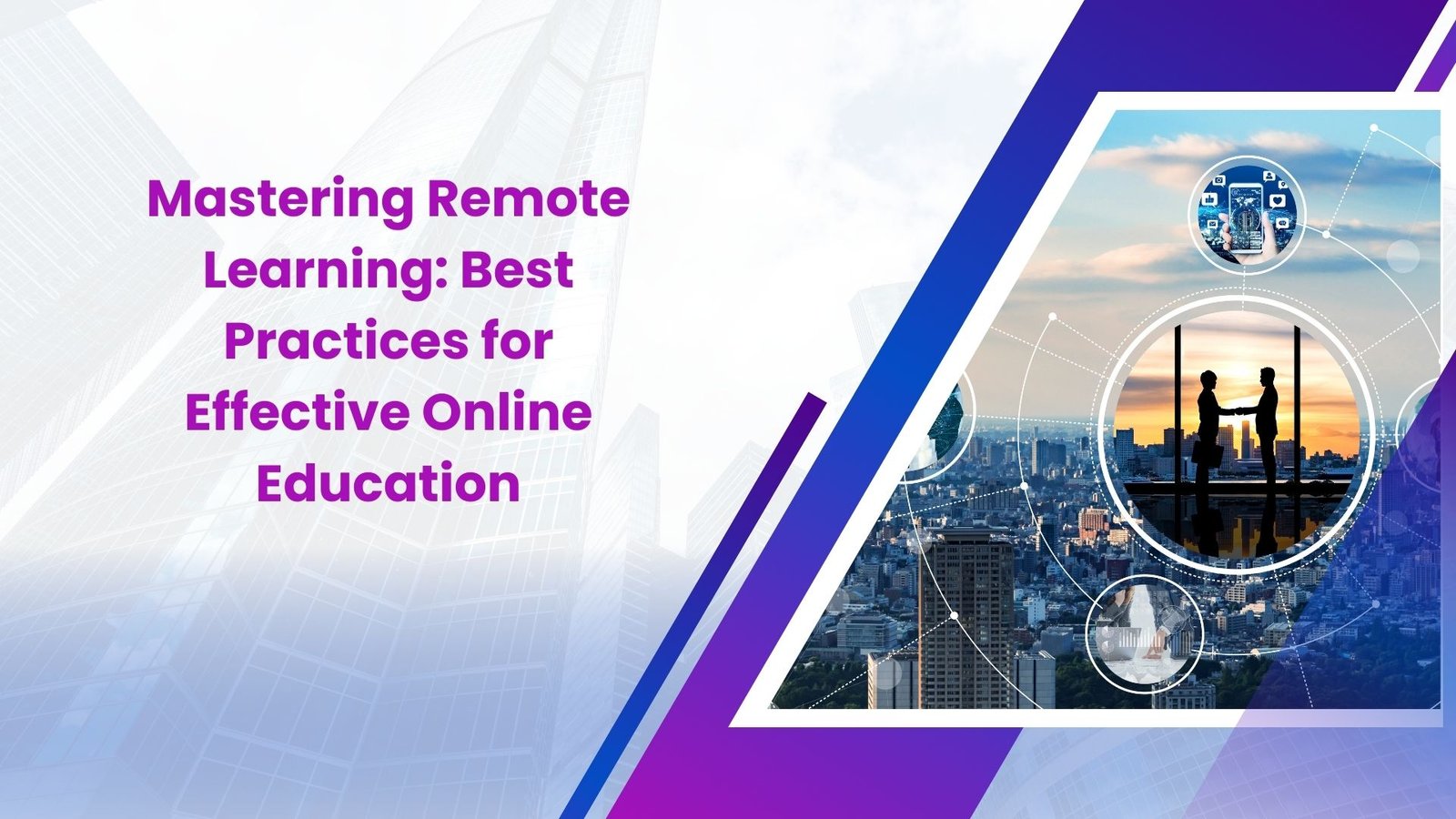Remote learning has become an integral part of education, providing flexibility and accessibility for students worldwide. To ensure successful online education, it’s crucial to implement remote learning best practices. These strategies help engage students, enhance learning outcomes, and create a productive virtual classroom environment. Let’s explore some of the most effective practices in remote learning.
Establish Clear Communication Channels
Effective communication forms the foundation of successful remote learning. Teachers should establish clear communication channels with students and parents. Use tools like email, messaging apps, and virtual meeting platforms to keep everyone informed. Regular updates and announcements help maintain transparency and ensure that students stay on track.
Encourage open communication by creating virtual office hours where students can ask questions and seek help. Prompt responses to inquiries foster a supportive learning environment and build trust. Clear communication also includes setting expectations for behavior, participation, and assignment deadlines.
Use Engaging and Interactive Content
Keeping students engaged in a remote learning environment can be challenging. To capture their attention, use engaging and interactive content. Incorporate multimedia elements such as videos, animations, and interactive quizzes into lessons. These elements make learning more dynamic and enjoyable.
Gamification also plays a significant role in engagement. Integrate game-like elements such as points, badges, and leaderboards to motivate students. Interactive content encourages active participation and helps students retain information better. Use tools like Kahoot!, Quizlet, and Nearpod to create interactive lessons and activities.
Implement a Structured Schedule
A structured schedule helps students manage their time effectively and maintain a routine. Create a detailed weekly schedule that includes live classes, assignment deadlines, and study time. Consistency in scheduling ensures that students know what to expect and can plan their activities accordingly.
Break down the schedule into manageable chunks to prevent overwhelm. Include short breaks between sessions to help students stay focused and energized. A well-structured schedule balances synchronous (live) and asynchronous (self-paced) learning activities, catering to different learning preferences.
Leverage Technology Tools
Technology plays a pivotal role in remote learning. Utilize various technology tools to enhance the learning experience. Learning management systems (LMS) like Google Classroom, Canvas, and Schoology streamline the organization and delivery of content. These platforms also facilitate communication and collaboration.
Video conferencing tools such as Zoom, Microsoft Teams, and Google Meet enable real-time interaction. Use these tools for live classes, group discussions, and virtual office hours. Additionally, explore educational apps and software that support specific subjects and skills, making learning more comprehensive and engaging.
Foster a Collaborative Learning Environment
Collaboration enhances learning by allowing students to share ideas and work together. Create opportunities for collaborative activities, such as group projects, discussions, and peer reviews. Use online collaboration tools like Padlet, Trello, and Miro to facilitate teamwork.
Encourage students to form study groups and participate in discussion forums. Collaborative learning helps students develop critical thinking, problem-solving, and communication skills. It also fosters a sense of community, reducing the isolation often associated with remote learning.
Provide Personalized Feedback and Support
Personalized feedback and support are crucial for student success in remote learning. Regularly assess student progress through quizzes, assignments, and participation in discussions. Provide timely and constructive feedback to help students improve and stay motivated.
Offer additional support for students who may be struggling. Schedule one-on-one sessions to address specific challenges and provide guidance. Personalized support demonstrates that you care about each student’s success and are committed to helping them achieve their goals.
Promote Active Learning
Active learning involves engaging students in the learning process actively. Encourage students to participate in discussions, ask questions, and apply concepts through hands-on activities. Use strategies such as think-pair-share, problem-based learning, and case studies to promote active learning.
Incorporate real-world applications and examples to make lessons relevant and relatable. Active learning fosters deeper understanding and critical thinking, helping students retain information more effectively. By actively participating, students become more invested in their learning journey.
Address Diverse Learning Needs
Remote learning should accommodate diverse learning needs and styles. Differentiate instruction by providing various types of content and activities. For instance, use videos, readings, and interactive simulations to cater to visual, auditory, and kinesthetic learners.
Provide additional resources and support for students with special needs. Use assistive technologies and tools to ensure accessibility. Tailor your teaching methods to accommodate different learning paces and preferences, ensuring that every student has an equal opportunity to succeed.
Encourage Self-Directed Learning
Self-directed learning empowers students to take ownership of their education. Encourage students to set goals, manage their time, and seek out additional resources independently. Provide guidance on effective study strategies and time management techniques.
Offer opportunities for independent projects and research, allowing students to explore topics of interest. Self-directed learning cultivates lifelong learning skills, fostering independence and responsibility. By taking control of their learning, students become more engaged and motivated.
Maintain a Positive and Supportive Atmosphere
A positive and supportive atmosphere is essential for successful remote learning. Create a welcoming and inclusive virtual classroom where students feel safe and valued. Celebrate achievements, recognize efforts, and provide encouragement to boost morale.
Foster a growth mindset by promoting the idea that mistakes are opportunities for learning. Encourage students to persevere through challenges and support each other. A positive atmosphere enhances student well-being and creates a conducive learning environment.
Conclusion
Implementing remote learning best practices ensures that online education is effective, engaging, and accessible. By establishing clear communication channels, using interactive content, leveraging technology tools, and fostering collaboration, educators can create a thriving virtual classroom. Providing personalized feedback, promoting active learning, and addressing diverse needs further enhance the learning experience. Encourage self-directed learning and maintain a positive atmosphere to support student success. As remote learning continues to evolve, these best practices will help educators navigate the challenges and opportunities of online education.

